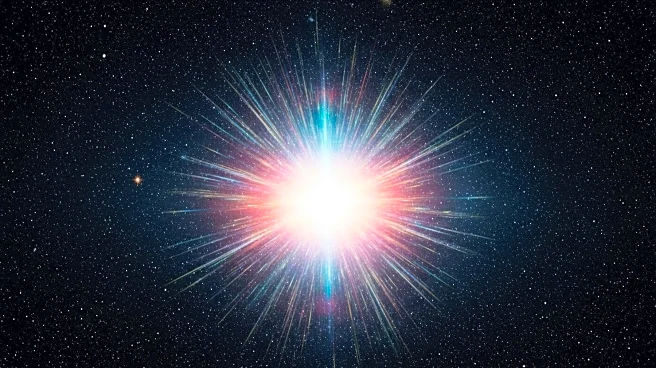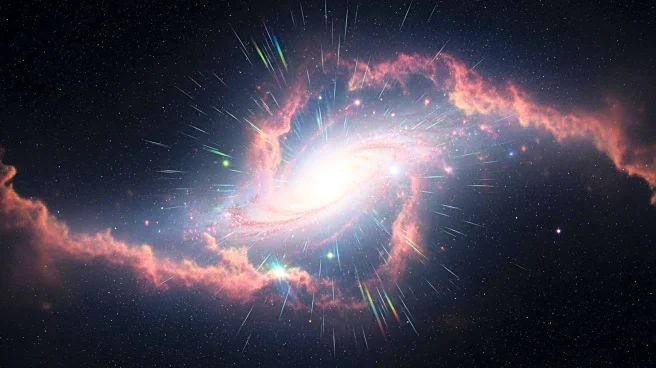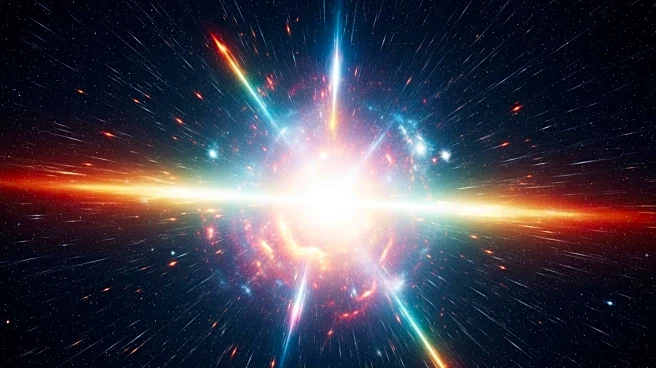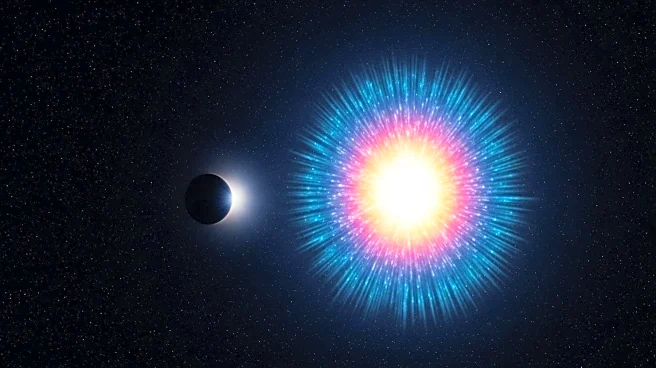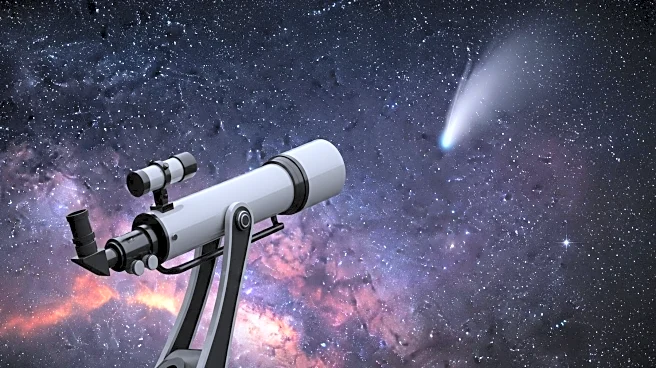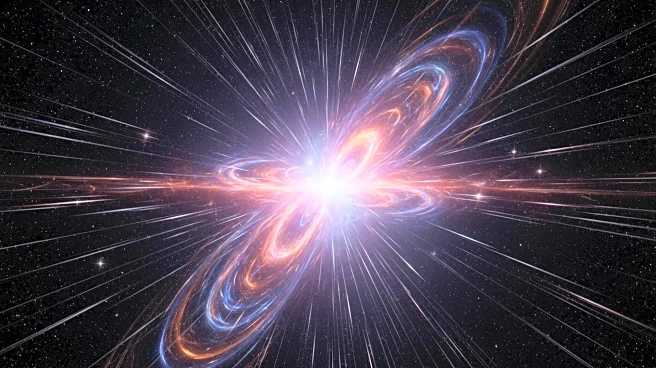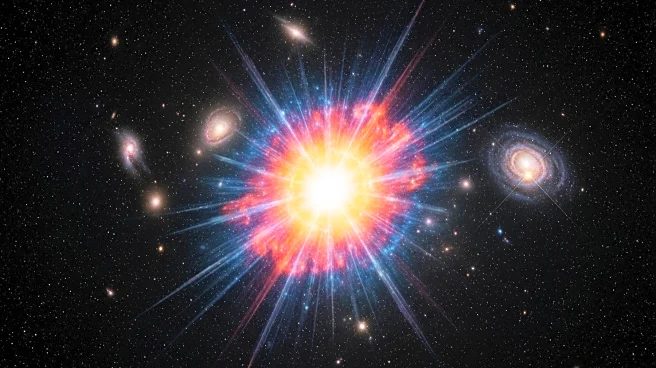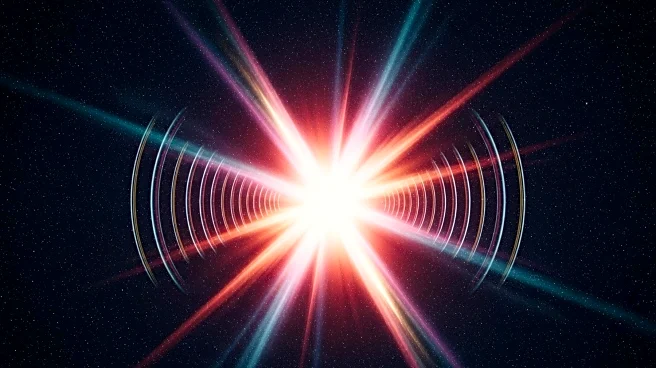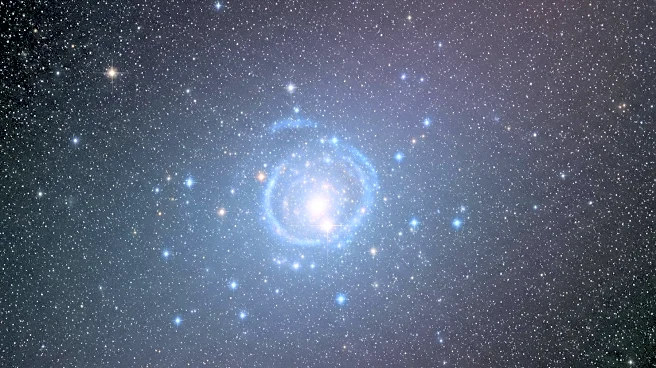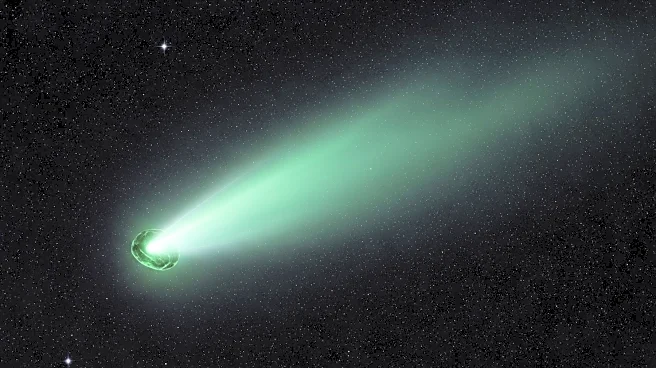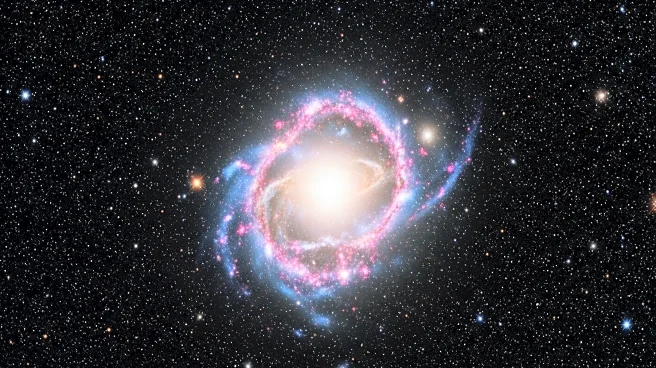What's Happening?
Astronomers have observed a gamma-ray burst (GRB) named GRB 250702B that challenges existing scientific understanding. This burst, detected by NASA's Fermi satellite and China's Einstein Probe, exhibited three distinct outbursts over several hours, with soft X-rays flaring earlier than usual. Typically, GRBs are categorized as short or long events, lasting from milliseconds to minutes, and are catastrophic, non-repeating phenomena. However, GRB 250702B repeated multiple times, a behavior not seen in 50 years of GRB observations. The source of this burst is believed to be extragalactic, located several billion light-years away, as confirmed by observations from the Very Large Telescope and the Hubble Space Telescope.
Why It's Important?
The detection of GRB 250702B is significant as it defies the conventional understanding of gamma-ray bursts, which are typically one-time events due to their catastrophic nature. This discovery could lead to new insights into the mechanisms behind GRBs and the conditions in which they occur. The unusual repeating pattern suggests a potentially new type of cosmic event or interaction, possibly involving intermediate-mass black holes or other exotic phenomena. Understanding these bursts can enhance knowledge of cosmic events and the universe's structure, impacting fields such as astrophysics and cosmology.
What's Next?
Further observations and studies are planned to understand the nature of GRB 250702B. Continued monitoring of X-ray and radio emissions will test theories about the burst's origin, such as a tidal disruption event involving a black hole. Researchers aim to refine the redshift measurements to establish the energy budget and compare it with known GRBs. Spectroscopy will help characterize the environment around the source, potentially revealing more about the conditions that led to this unusual event.
Beyond the Headlines
The discovery of GRB 250702B may prompt a reevaluation of existing models of gamma-ray bursts and their origins. It raises questions about the nature of black holes and their interactions with surrounding matter. The event's extragalactic nature suggests powerful cosmic processes that could inform theories about galaxy formation and evolution. This research could also lead to advancements in observational techniques and technologies used in astrophysics.
